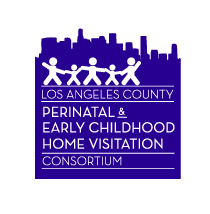FY 22-23 California Budget Impacts on Families
The California state budget for Fiscal Year 2022-2023 was signed by Governor Gavin Newsom on June 27, 2022. The following is a list of budget items that affect parents and children ages 0 to 5. The budget includes an increase in home visiting funding and many proposals that will positively impact families. However, the budget failed to increase wage replacement rates for paid family leave and state disability insurance as well as set aside funding for infant and early childhood mental health.
Home Visiting
$37.5 million for the Department of Public Health to expand the California Home Visiting Program, serving approximately 6,000 additional families over five years on top of 3,700 currently served by the Home Visiting Program
Early Childhood
$10 million one-time funding for the Department of Public Health to partner with First 5 California on the Books for Children Program
Child Care
One-year waiver of family fees and provider payments based on student enrollment, not attendance
$100 million in one-time federal funds for child care facilities
100 million for health care benefits for certain subsidized child care providers
Safety Net
A two-year 21% CalWORKs grant increase effective October 1, 2022, raising grants above the deep poverty threshold for all cases with at least four eligible people, even where there is also an excluded member.
Medi-Cal
$10 million in FY 22-23 and $20 million ongoing to support continuous Medi-Cal coverage for children ages 0-5
Expands comprehensive Medi-Cal coverage to low-income undocumented Californians ages 26 to 49
Public Health
$300 million ongoing to improve public health infrastructure
$200 million earmarked for local health jurisdictions
$100 million for state-level operations.
Local health jurisdictions to receive a minimum base allocation to support workforce expansion, data collection and integration, and partnerships with health care delivery systems and community-based organizations.
$250 million for behavioral health for children ages 0 to 25
Not included: dedicated funding for infant and early childhood mental health
$532.5 million one-time over four years to strengthen the behavioral health workforce, the public health workforce, and the primary care and reproductive health workforce, including community health workers
$200 million to protect and increase access to reproductive health care services. Funding in the budget agreement includes:
$40 million to establish an uncompensated care fund for Californians with low incomes;
$20 million to support abortion training for clinicians and health care professionals;
$20 million to establish the Los Angeles County Abortion Access Safe Haven Pilot Program; and
$20 million to assist patients in overcoming barriers to abortion care.
Transitional Kindergarten
$614 million to support the first year of expanded eligibility for TK, supporting shift of eligibility from all children turning 5 between September 2 and December 2 to all children turning 5 between September 2 and February 2
Rebates
One-time payments for Californians who filed a tax return for 2020. Filers will receive the following rebate amounts for themselves, their spouse if filing jointly, and up to one dependent.
$350 for filers with incomes below $75,000 ($150,000 for joint filers);
$250 for filers with incomes between $75,000 and $125,000 ($150,000 – $250,000 for joint filers); and
$200 for filers with incomes between $125,000 and $250,000 ($250,000 – $500,000 for joint filers).
Tax Credits:
California families who have children under age 6 and do not have work earnings will now qualify for the $1,000 Young Child Tax Credit (YCTC), and the YCTC will be adjusted annually for inflation so it keeps up with rising prices.
Former foster youth ages 18 to 25 who qualify for the CalEITC will be eligible for a new $1,000 Foster Youth Tax Credit modeled after the YCTC.
$20 million for two years, and $10 million annually thereafter, to support community-based efforts to raise tax credit awareness and connect Californians with free tax preparation services
Paid Time Off
What was not included in the 2022-23 California state budget:
Updated payment rates for the state’s paid family leave and disability insurance programs; and
An extension of COVID-19 paid sick leave days beyond the current sunset date of September 30, 2022.
For more information about the May budget revise, see our previous post here.


